I am also aware of how sophism can result in failure in the structure of argument.
If this was directed at me (?), then sophism has never formed part of my posts on this forum. The arguments I have presented in this thread like any other are not obscure.
It was offered because it is easy to make assertions, and to do so without the necessary steps in facts and reasoning, and if that is done potential sophism is not scrutinisable
I played around a little with the DSP and came to the concusion that the dip that I used (Center 2.5 kHz, Q=1.2, Depth -5 dB) made things like female voices for instance sound smoother. Regarding imaging it does definitley make things step back a little but it also adds a veil to the sound making it sound less "real". I did also use the dip with and without some tilt and although it gives warmth to the sound my conclusion is that for me personally a response as linear as possible is the best for long-term listening.
Regards
Charles
Regards
Charles
It's always been my assertion that the more vague and elusive a proposition is, the more attention it elicits at DiyAudio! Honestly, my good friends, life is too short! We used to call these sort of dubious engineering solutions: "Applying a Fudge-Factor". It's rotten. 😀
This BBC Dip business is just not worth loosing sleep over! 🙄
Whether you think it's about a gentle rolloff in frequency response towards the top, or an exaggerated power hole at crossover.
Here's what happens with a big 8" bass and a small 1" tweeter in a two way:
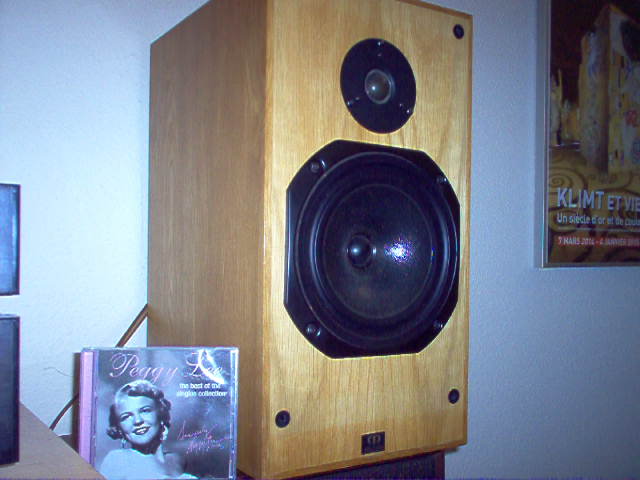
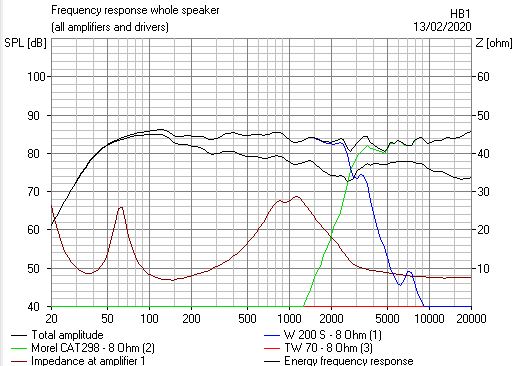
See how the tweeter seems to suddenly shout on power (aka Energy) response?
I have my BW3 filter solutions to this:
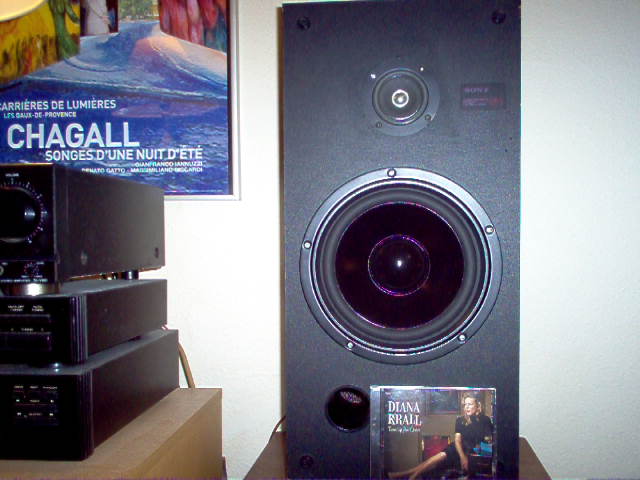
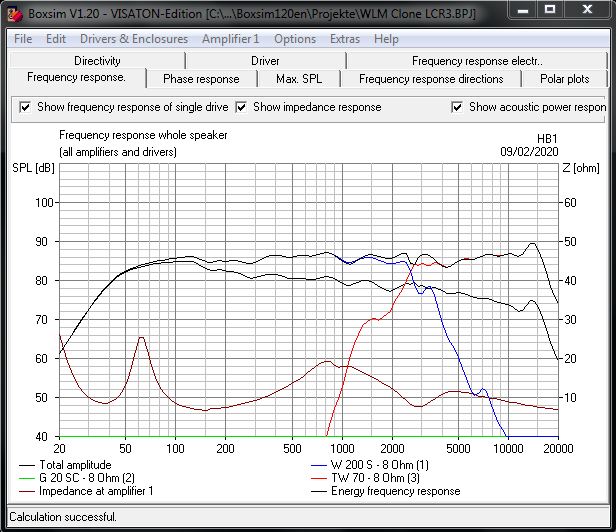
John DeVore has done something clever by choosing a narrow dispersion Morel CAT378 waveguide tweeter in his 10" Orangutan 0/96 speaker, here cloned by one of our people with a mere cap and attenuator tweeter filter:
Devore Orangutan Clone?
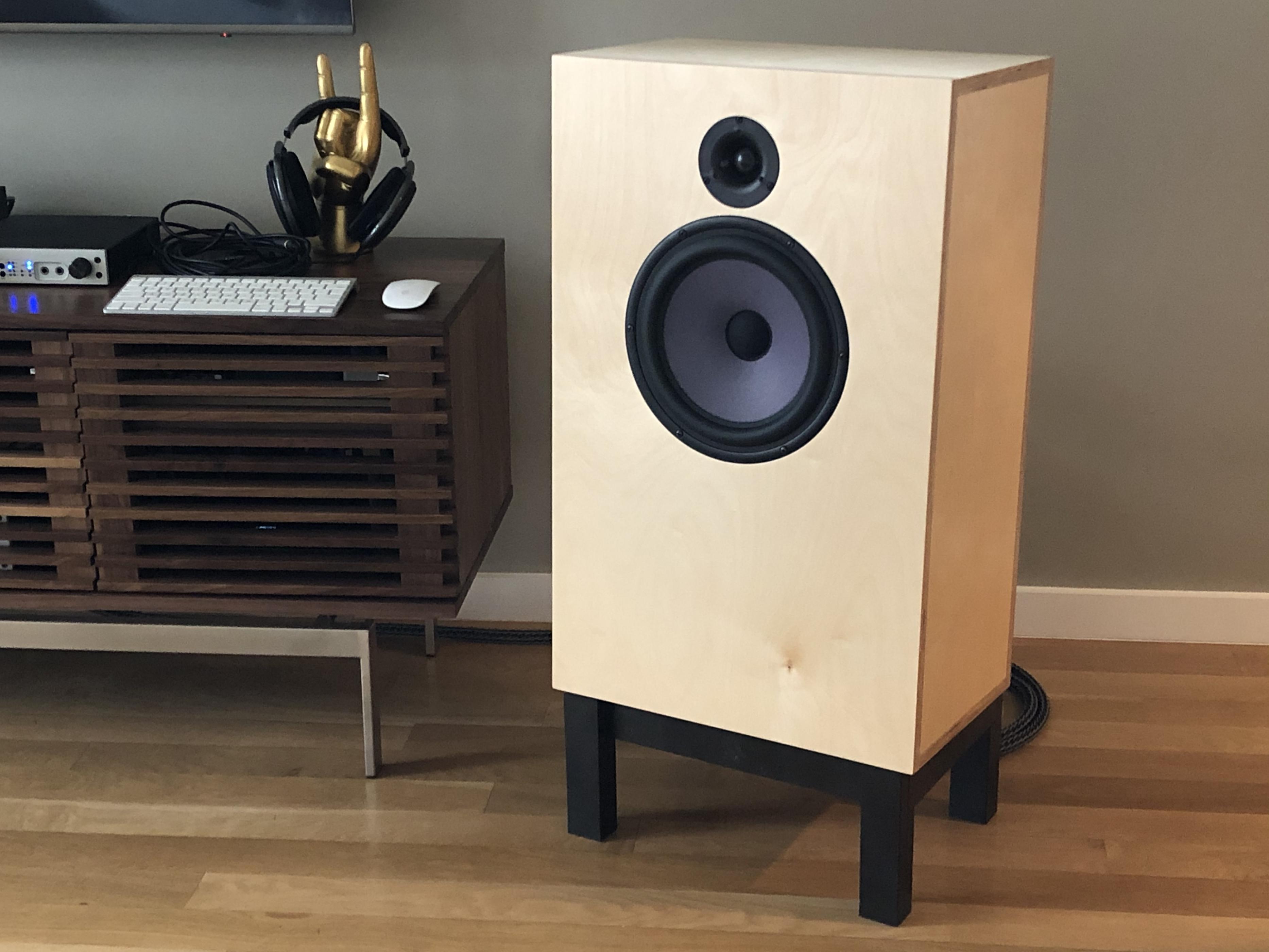
This is a good way to do a two way IMO:
6moons audio reviews: WLM Diva Monitor with Diva Control
Eminence Coaxial Beta 10CX woofer and APT50 on a standard Eminence crossover. Apparently as good as an old Tannoy dual-concentric!
But the best speaker is a three way, every time:
SEAS-3-Way-Classic
Loud without effort. The right way to do things. 😀
This BBC Dip business is just not worth loosing sleep over! 🙄
Whether you think it's about a gentle rolloff in frequency response towards the top, or an exaggerated power hole at crossover.
Here's what happens with a big 8" bass and a small 1" tweeter in a two way:
See how the tweeter seems to suddenly shout on power (aka Energy) response?
I have my BW3 filter solutions to this:
John DeVore has done something clever by choosing a narrow dispersion Morel CAT378 waveguide tweeter in his 10" Orangutan 0/96 speaker, here cloned by one of our people with a mere cap and attenuator tweeter filter:
Devore Orangutan Clone?
This is a good way to do a two way IMO:
6moons audio reviews: WLM Diva Monitor with Diva Control
Eminence Coaxial Beta 10CX woofer and APT50 on a standard Eminence crossover. Apparently as good as an old Tannoy dual-concentric!
But the best speaker is a three way, every time:
SEAS-3-Way-Classic
Loud without effort. The right way to do things. 😀
Last edited:
The first graph is not too bad compared with many I have seen, but I don't see what you mean by "shouting".
The second is rather good.
I came across these bits today, the two links show FRs of the LS 5/8 and 5/9, and the comments are from Mark Hennessy, a BBC engineer.
http://downloads.bbc.co.uk/rd/pubs/reports/1979-22.pdf
http://downloads.bbc.co.uk/rd/pubs/reports/1983-10.pdf
From Mark Hennessy;
“If you search around, you'll find plenty of comments from Alan Shaw of Harbeth. He knows this loudspeaker extremely well, and is fairly critical of it, citing a problem with the midrange being recessed by around 4dB, backed up by frequency response plots on his discussion forum”.
“For what it's worth, the LS5/8 commits similar sins and more”.
The second is rather good.
I came across these bits today, the two links show FRs of the LS 5/8 and 5/9, and the comments are from Mark Hennessy, a BBC engineer.
http://downloads.bbc.co.uk/rd/pubs/reports/1979-22.pdf
http://downloads.bbc.co.uk/rd/pubs/reports/1983-10.pdf
From Mark Hennessy;
“If you search around, you'll find plenty of comments from Alan Shaw of Harbeth. He knows this loudspeaker extremely well, and is fairly critical of it, citing a problem with the midrange being recessed by around 4dB, backed up by frequency response plots on his discussion forum”.
“For what it's worth, the LS5/8 commits similar sins and more”.
i do not like the tone in this thread, just because physcoacoustic compensations may be small in level it might actually be a useful tool to improve our stereo listening, just waving this off does not feel right
Nobody gets this. 🙂
Somebody once asked me to name a single driver speaker that works! It's actually your 3/4" phone earbuds.
Agreed? But a headphone speaker relies on direct connection to the ear.
Once you try to build a speaker for the room, the inverse-square law applies.
This is a whole new box of worms.
My own theory is the Wharfedale E70 of the 1970's was a good effort:
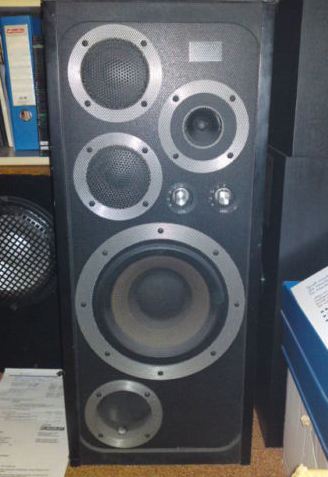
IMO, it's all about the voices. This speaker honestly blew away all the BBC nonsense. Nobody wanted to admit we had been wasting our time with frequency response.
Somebody once asked me to name a single driver speaker that works! It's actually your 3/4" phone earbuds.
Agreed? But a headphone speaker relies on direct connection to the ear.
Once you try to build a speaker for the room, the inverse-square law applies.
This is a whole new box of worms.
My own theory is the Wharfedale E70 of the 1970's was a good effort:
IMO, it's all about the voices. This speaker honestly blew away all the BBC nonsense. Nobody wanted to admit we had been wasting our time with frequency response.
i do not like the tone in this thread, just because physcoacoustic compensations may be small in level it might actually be a useful tool to improve our stereo listening, just waving this off does not feel right
The thread seems to me to be a discussion of a phenomenon, and attempt by all to validate or invalidate it, and arrive at conclusions if possible.
Do you mean human voices system7?
That's a bit Off the Wall, isn't it? 😕
I'm just the Man who Shot Liberty Valance. YouTube
Crazy, Good. 😀
The thread seems to me to be a discussion of a phenomenon, and attempt by all to validate or invalidate it, and arrive at conclusions if possible.
Yes, but some posts seems to wave these things off
If my understanding is correct then the BBC dip isn't the precise antidote to the HRTF (which are veeeeery individual anyway !!!) affecting the localisation with ordinary stereo. It is more or less a compromise.
When I tested it myself it definitley had an effect on localisation and it made things sound more relaxed and less fatiguing for long-term listening. OTOH I had the feeling that without it everything sounds more "real" with my setup (large MTM with horn). But this is of course non-scientific and just my perception.
When I find the time to do so I will also try it with two way speakers with dome tweeter.
Regards
Charles
When I tested it myself it definitley had an effect on localisation and it made things sound more relaxed and less fatiguing for long-term listening. OTOH I had the feeling that without it everything sounds more "real" with my setup (large MTM with horn). But this is of course non-scientific and just my perception.
When I find the time to do so I will also try it with two way speakers with dome tweeter.
Regards
Charles
That's a bit Off the Wall, isn't it? 😕

I'm just the Man who Shot Liberty Valance. YouTube
Crazy, Good. 😀
I was genuine in my question system7.
The BBC placed a great importance on a loudspeaker's ability to reproduce human voice, and there are at least three designers from the BBC, and now designing commercially who site this as a primary endeavour.
Alan Shaw of Harbeth, Peter Thomas or PMC, and I believe Derek Hughes now designing for Graham Audio.
But you may have meant the voicing of a speaker.
BTW I have never understood the meaning of "Off the wall".
There is in my mind at least, still a divide between and subjective approach - 'to make it sound right', and a technical and reasoned argument for why there should be a dip.
Paulo Tezzon, Chief of Acoustics Sonus Faber:
"Studying human hearing perception means being aware that it is not linear at all, another cultural asset which influenced Sonus Faber in designing speakers the way we do. The slight lack of energy in the crossover region is purposeful because this is the range of frequencies where our human hearing is most sensitive, and we compensate for that. For the exact same reason, we also introduced increased energy in the high frequencies: There, the human hearing apparatus is less sensitive. One of the benefits of this design choice is testified to by the excellent staging ability of the Olympica Nova I (also highlighted by the review) and of course requires a custom-designed tweeter able to sound transparent and detailed without being harsh or aggressive when pushed."
Sonus Faber Olympica Nova 1 loudspeaker Manufacturer's Comment | Stereophile.com
"Studying human hearing perception means being aware that it is not linear at all, another cultural asset which influenced Sonus Faber in designing speakers the way we do. The slight lack of energy in the crossover region is purposeful because this is the range of frequencies where our human hearing is most sensitive, and we compensate for that. For the exact same reason, we also introduced increased energy in the high frequencies: There, the human hearing apparatus is less sensitive. One of the benefits of this design choice is testified to by the excellent staging ability of the Olympica Nova I (also highlighted by the review) and of course requires a custom-designed tweeter able to sound transparent and detailed without being harsh or aggressive when pushed."
Sonus Faber Olympica Nova 1 loudspeaker Manufacturer's Comment | Stereophile.com
I do not think sonus faber is the most skilled manufacturer but they might be on to something that flat frequency response might not be the ultimate goal, many smaller sonus faber models throu the years have recieved good reviews regarding imaging and soundstage, and many of them do not have flat frequency responses! Other speakers with similar reviews are also small and have non flat frequency responses. If one could collect many of them and compare measurements one might find something.
- Home
- Loudspeakers
- Multi-Way
- BBC Dip